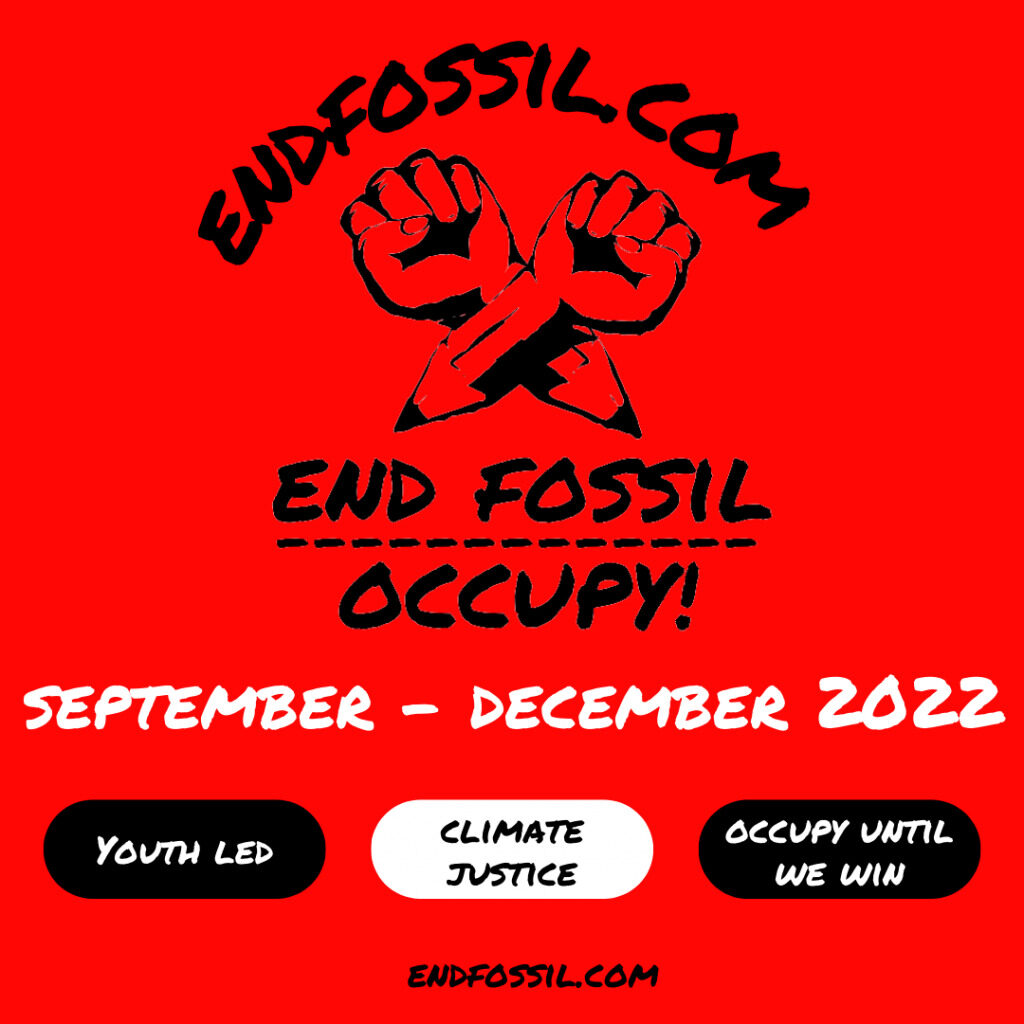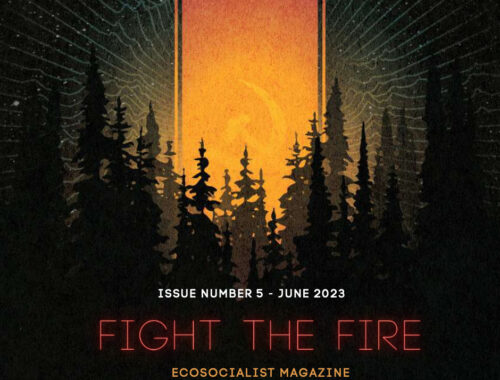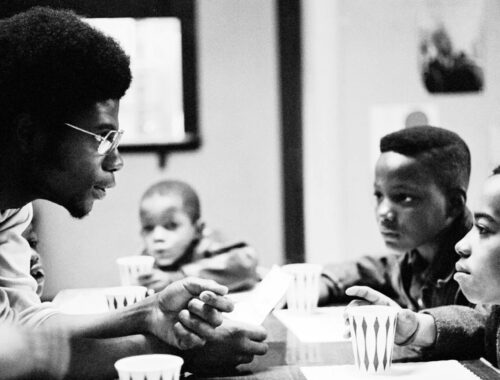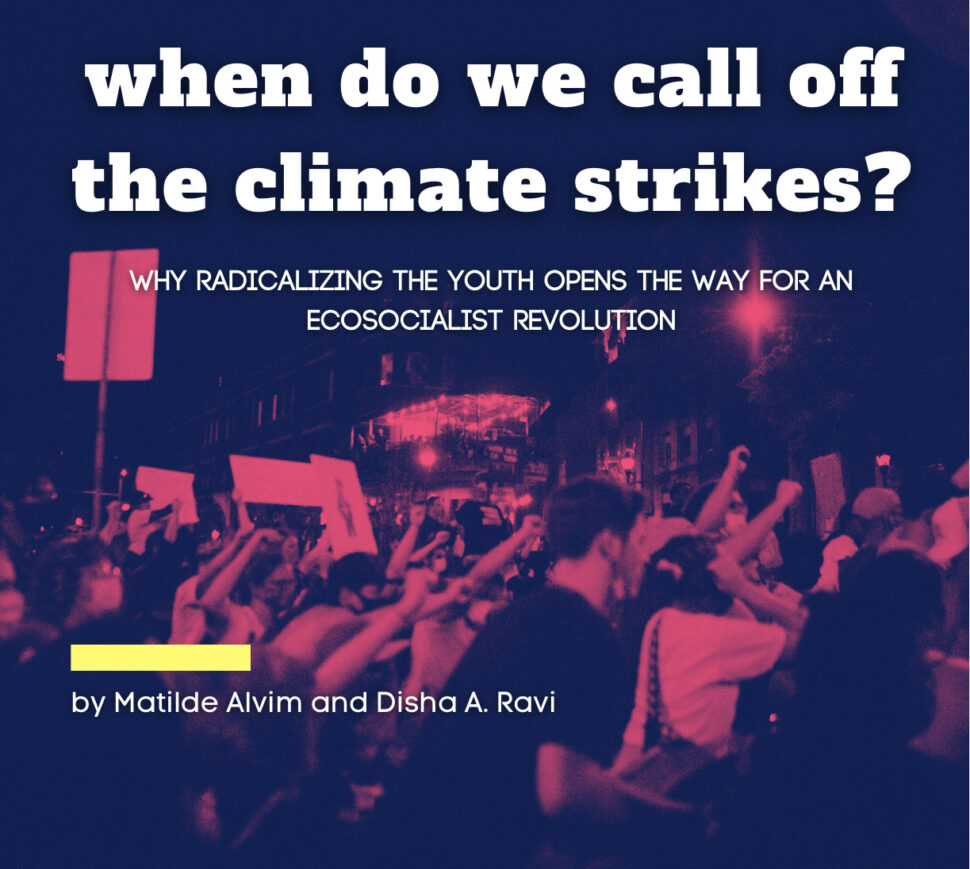
When do we call off the climate strikes?
The recipe for a revolution has been written by those who came before us. It’s quite simple, we need to mix a spoonful of organizing students, salaried workers, farmers, indigenous peoples, scientists, the working class and the academics together. After that, we need to gently remove the structures of injustice within us and combine our imperfect selves and let our differences unite together to create a perfectly balanced dish. This recipe will ensure that we dismantle capitalism, reduce our emissions, focus on degrowth and build a society that leaves no one behind.In the months to come, we will be cooking up this recipe and we will be occupying schools and universities around the world to scale up an ecosocialist revolution. A radicalization within ourselves and our surroundings that will pave the way to an ecosocialist movement.
Since 2019, the youth around the world took to the streets in millions to mobilise for climate justice in every continent and almost every country around the world. This movement was called Fridays for Future or School Strike for Climate Action, where children skipped school on Fridays to strike for climate justice. They coordinated global climate action days where the whole globe stopped to watch as millions took the streets. The idea was simple, yet brilliant: if you go to school, you can strike and protest, and you are therefore now part of an international movement.
This movement soon grew to include people of all ages and people skipped their office or their daily work to fight for a better planet. Fridays for Future pushed mass international mobilization for climate justice at another level, creating a wave of media and cultural attention to the climate crisis, as well as organizing other sectors of society along with it: teachers, parents, scientists, etc. It helped push the leverage for more radical action from other parts of the movement, and it created youth organization hubs for climate justice all over the globe. Having its peak in September 2019, it then started to decrease its capacity and creativity as a core question arose: when do we call off strikes?
As the pandemic hit, the youth movement had to drastically decrease its mobilization capacity. With this, they had to switch to digital strikes, which didn’t prove as effective. Post lockdown, the strikes resumed in some areas but it was no longer threatening to the status quo. And in some other areas, it became dangerous for students and people to skip school in certain authoritarian countries and the climate justice movement demanded the usage of other strategies that would urge world leaders to take climate action. Upon some reflection we realized that our strikes were tailored for countries in the Global North and it lacked strategy, radical action and movement building that could adjust to the needs of the Global South.
Instead, we kept skating on the eternal loop of doing the same thing over and over again, with no coordinated escalation plans. Many organizers felt tired and hopeless. Some of the groups radicalized, others kept holding on to the belief we are on the right path and governments and institutions will eventually really listen to us. The result? A youth climate justice movement trapped in its own status-quo, not looking at the task directly in the eyes and, above all, not getting closer to victory.
We are now certain it is time to try something new for the youth, (re)transforming it into being an active part of the broader movement on the path of building an international mass ecosocialist revolution.
As the climate crisis continues to rage its violence on black, brown and indigenous children,we know we need to radicalize our tactics and our actions. Revolution is our task and radicalization is our duty. Radicalizing allows us to scale up the confrontation level with governments and institutions who, as we have been saying in the past years, have been doing nothing but more empty promises. Stepping away from the “cute children” narrative, we need to change the narrative to depict a threat to the status quo. Changing our narration, our tactics and our strategies can welcome new people in the movement and enable the existing people to practice hope on a regular basis. Our work should always factor in the masses and ensure that no one is left behind.
That’s why between September and December 2022, carefully following this strategical movement analysis, the youth all over the world will occupy schools and universities to demand the end of the fossil fuel era under the international action callout “End Fossil: Occupy!”. Why the fossil fuel industry? Well, we need to focus on what’s essential: keeping it in the ground and dismantling the pillars of the fossil industry, who takes away our present and our futures. All over the world, students will occupy their school and university buildings following only 3 principles:
- youth-led occupation;
- climate justice framework for the demands
- occupy until you win them
The concrete demands are locally built by each occupations (either at national, regional or state level), and depending on the context can vary between demanding the end of fossil extraction, fossil finance, fossil infrastructures, fossil funding, among others. This allows for 2 strategical advantages: in the first place, attacking the fossil fuel industry in its many shapes around the globe while at the same time mobilizing people for issues that locally make sense; and second, it allows for a call-off of the tactic: you only leave the occupation once you win your demand. We can now have concrete, strategical, and winnable demands that attack the same sector all at once, thus contributing to a stronger youth movement with ecosocialist demands. Besides this, we are shifting the way we see protest. We are no longer walking out of school, going to a march, and then returning home at the end of the day. As the crisis advances and institutions don’t respond, we shall occupy and disrupt the same schools, disrupting the normal functioning of society at such a big scale that it’s impossible to govern. We are taking over our spaces to say that the fossil fuel industry has to go, now.
As many movements before us, we need to reclaim and organize in our spaces – in our case, schools and universities. If we need a majority of sectors of society to build an ecosocialist mass movement that can win, then we shall play our role by organizing students. In some cases, schools and universities have a direct stake on climate chaos, as it is the case of universities in Europe and the USA who have their money invested in fossil fuel companies. Other times, they are indirect stakeholders. They are preparing us for a future of fossil capitalism, acting as if all is normal and our house wasn’t on fire. That’s not the future we want; that future does not exist. We shall build our own.
It’s not the first time a youth movement takes the lead and inspires all of society to come along. Examples include May of ‘68 in France, where students started a rebellion against bureaucracy, capitalism and imperialism in universities that spread to French workers and society, resulting in a social transformation and sexual revolution in the country; Primavera Secundarista in 2015 in Brazil, when high school students took over their buildings to protest against the shutting down of hundreds of schools; or Penguin Revolution in Chile in 2006, when students rose up against the educational system which maintained a lot of features from the far right dictatorship of Augusto Pinochet.
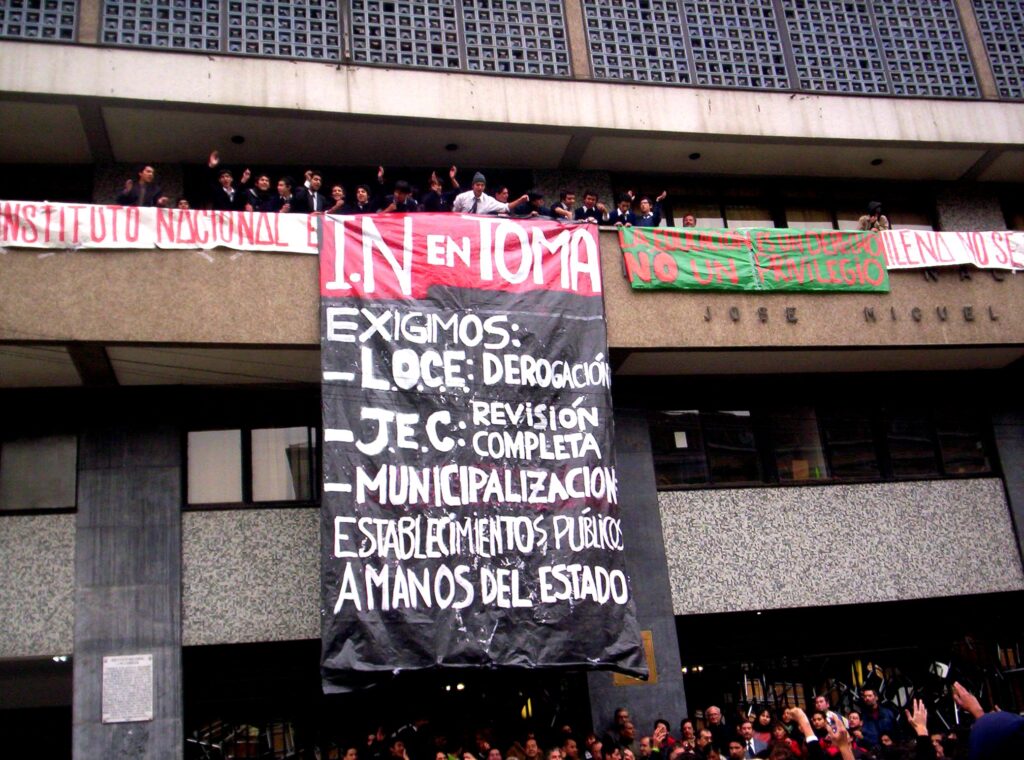
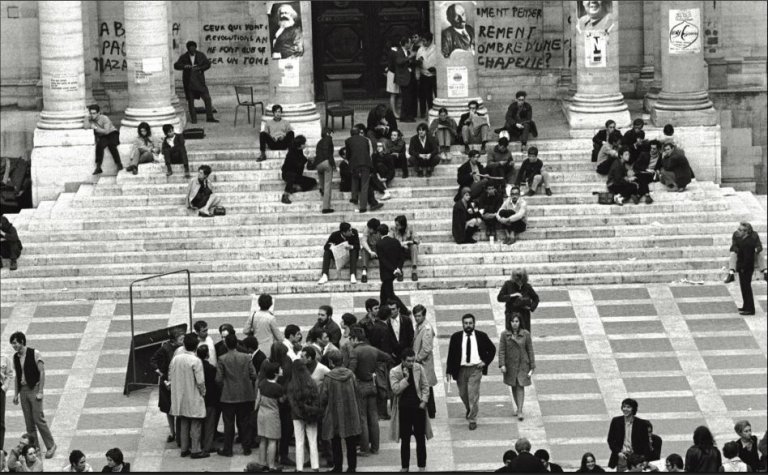
Inspiring ourselves in these historical examples, to name only a few, we understand that the youth can be a revolutionary subject and lead society to change. All these movements were addressing issues that have at its core the capitalist system and the way it is oriented towards profit, and not life and justice. Now, we face one of the biggest challenges humankind has ever seen: in less than 10 years, we need to build a mass movement that can cut more than half of global greenhouse gas emissions by 2030. And as the French students did in 1968, we need to start the sparkle that spreads to all of society. We have decided to take ourselves seriously and face up to the fact that we too are a revolutionary subject, that we can build a mass ecosocialist movement, and we have the power to smash the fossil fuel industry. With the “End Fossil: Occupy!” action callout we hope to bring a new life to the climate justice movement, massively mobilizing and organizing thousands of students all around the world to occupy. The occupations will be beautiful spaces where we create pre-figurative moments of what the world without profit in the center may look like, and where we politicize ourselves and create the political agenda for a just transition in our schools, our regions and our countries. We aim at creating a wave even bigger than in 2019, creating a huge momentum of international articulation and solidarity with this simple-to-reproduce action.
The task of a climate justice revolution is in front of us, and we decided to take it. Our radicalization will open the way for a mass ecosocialist climate justice movement that will win.

Matilde Alvim and Disha Ravi are climate justice activists in Portugal and India, organizing End Fossil – Occupy

